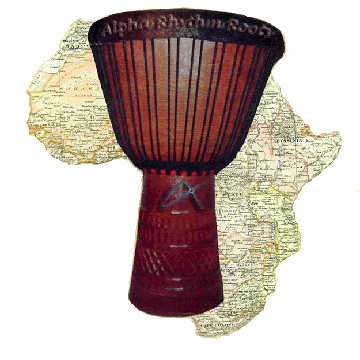Why you will never learn how to play the Djembe in a drumming circle
- alpharhythmroots

- Jan 29, 2021
- 2 min read
Transferred from an older blog: Original post date by Alpha (Administrator) on 07/20/11
If you are regularly going to drumming circles, and don't understand why you don't seem to ever get better at playing the Djembe drum, you will find the answer in this article.
The North American drum circle concept has grown out of the initial lack of understanding of West African and other traditional form of percussion music from around the world by the first North Americans who were exposed to it. Drumming circle mainly was inspired by West African Djembe drumming music (Djembe and Doundoumba drums), but the complexity, sophistication, and uniqueness of Djembe music made it very hard for North Americans to comprehend its musical structure and rhythmic interaction. Consequently, West African Djembe drumming mainly was reduced to a simple form of group drumming with mixed instrument from many cultures, taken out of their traditional and cultural context; with little to no interaction between drummers...most of them having no general music basics. It has been called the "drumming circle".

In Guinea, one of the two countries where the Djembe drumming tradition originated from, the base and foundation of Djembe drumming is in the 3 base drums: Doundoumba, Sangban, Kenkeni (The 3 drums set also being called Doundoun). The base drums produce the core of the music, while the Djembe is an accompaniment and solo instrument. Read the traditional Guinean percussion orchestra article on this blog for further details about the traditional ensemble structure. The base of each of the 300+ traditional Djembe drumming pieces of music (rhythm), played by at least 5 percussive instruments, is a precise composition for each base drum and each Djembe accompaniment; resulting in hundreds, if not thousands of combined patterns on the Djembe drums and Doundoumba. The dynamic interaction between base drums and Djembe explains the difficulty one encounters trying to learn how to play the Djembe without playing base drums. The 3 base drums have been non existent in drum circles, but lately, drum circles have seen the appearance of the base drums wrongly called Jun-Jun instead of Doundoun. Unfortunately, and just like for the Djembe drum, novice players assume the Doundoun (base drums) can be played without instruction. The result is only that the drumming circle becomes even more chaotic.
The appearance of the Doundoun in drum circles is unfortunately reinforcing a common misconception that Djembe playing (Djembe and Doundoumba drums) does not need instruction. Unfortunately, this very simplified form of drum circle group playing has spread all over North America, while people mistakenly assume that the sophisticated and highly interactive West African ensemble is the same as the drum circle. Most novice and percussion music enthusiasts are unaware of the difference, while the origin of the instrument as well as the origin of the sophisticated Djembe ensemble type of playing are being purposely ignored and hidden by many North American and Indonesian "drum makers" as well as "circle facilitators" for commercial reasons.


Comments